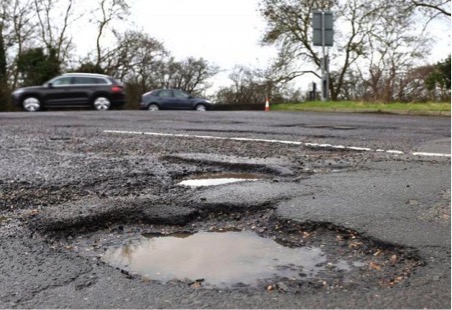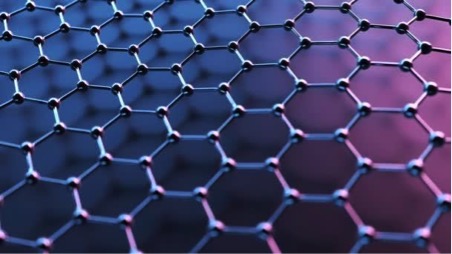Highways England, the government authority responsible for England's highways and A roads, is partnering with Manchester's GEIC in a bid to solve some of the challenges that plague the country's road network.
GEIC has stated that by adding graphene into the mix when maintaining and renewing England's major roads, their lives could be extended multiple times over and see them performing at a level that British motorists are not used to.

Potholes in a UK road surface. Image courtesy of the BBC.
Although stronger, smoother, pothole-free roads improve safety, cut down on roadworks, and are generally more pleasant to drive on, they may seem like a huge ask given the current state of the English roads network—yet all this and more may soon be a reality thanks to graphene.
What is Graphene?
Given that graphene was first isolated from graphite in 2004 by the University of Manchester (UoM) researchers, it seems rather apt that the Manchester-based GEIC is leading this effort.
The first two-dimensional material ever to be discovered, graphene has extraordinary properties and characteristics. These characteristics are so incredible, in fact, that its isolation from graphite, hailed as one of the century's most formidable scientific events, won Andrei Geim and his team the 2010 Noble Prize in Physics.
Some of graphene's characteristics include:
-
Ultra-lightweight and flexible despite being stronger than steel;
-
Self-healing, having molecules that realign after impact;
-
Its functionality as a brilliant conductor of both electricity and heat; and
-
A scale that measures 1 millionth the width of a human hair.
This ultra-strong, transparent hexagonal lattice of carbon atoms has a huge range of possible applications in industry, processes, products, and more.

Graphene's characteristic lattice structure. Image courtesy of Depositphotos.
While we commonly discuss graphene's potential use in electronics, the fact that it is being considered for use in roadways should highlight just how much potential this simple material holds. For more insight on the various uses of graphene, check out our article comparing it to similar materials: plumbene and silicene.
The Path to Longer-lasting Roads
It's getting to the point where it seems that graphene is the solution to just about anything.
Paul Doney, innovation director at Highways England, said:
"GEIC is at the forefront, having made the discovery here in Manchester, and by building a collaboration with our operations teams who understand the challenges, we are looking to deliver improved safety and performance of our roads."
As a result of graphene's high thermal conductivity, it is less likely to soften when it heats up. Several countries throughout the world, England included, have seen newly-paved roads torn apart during hot spells of weather. This is a problem that's going to grow in severity as our climates become hotter and less predictable.
Not only that, graphene's addition to the road network could reduce road wear over time, due to the material's inherent elasticity and strength, and make roads more resistant to impacts and less likely to fracture.
James Baker, CEO of [email protected], the business-facing element of UoM's graphene development efforts, also said:
"This latest partnership is a brilliant example of how graphene can be used to tackle problems faced by most people every day. This is further enabled by the facilities and capabilities we can provide to our industry partners, [which] accelerate the many small improvements that ultimately create an optimised product."





